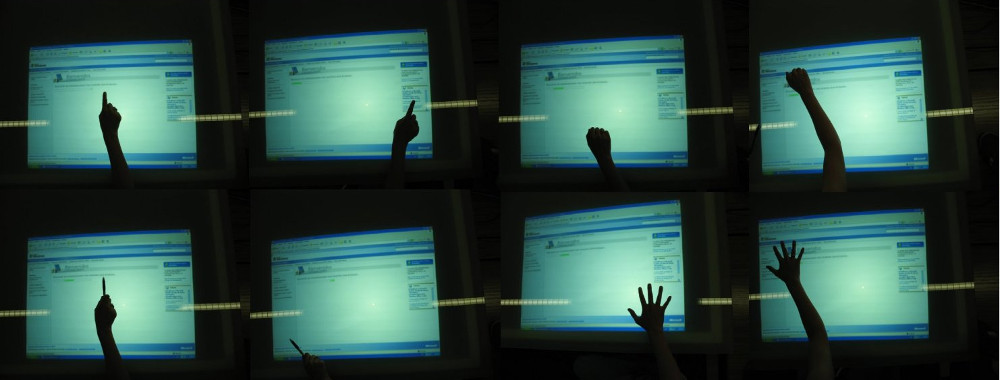
- Full title Estudio y desarrollo de interfaces multimodales para habitaciones inteligentes
- Funding entity Xunta de Galicia
- Researchers Francisco Javier Bellas Bouza, Richard J Duro Fernández, José Antonio Becerra Permuy, Santiago Vázquez Rodríguez, Alejandro García del Valle, Pablo Fariñas Alvariño, Arturo Nieto de Almeida, Fernando López Peña, Eduardo Guillén Solorzano
- Start date 03/08/2004
- End date 30/09/2007
- Teydi S.L
- Universidade da Coruña
Description
En In this project, strategies for obtaining multimodal interfaces to be used in intelligent environments were examined.
These environments are characterised by the existence of a large number of sensors and interactive elements to provide the specific services to the user, always in a proactive and efficient way with a completely natural interface. To that end, we designed and equipped a room as an experimental intelligent meeting room in which the user can develop specific systems for ambient intelligence.
This development covers a part of the HI3 (Humanised, Interactive, Intelligent and Integrated Technology) proposal made by the GII, which serves as a foundation. The project also analyses certain related, higher level topics. Through the experimental set mentioned above, it provided very valuable feedback for future research projects, which be implemented in real scenarios like households, catering establishments and other types of buildings.
This project has fulfilled the following objectives:
- Establishing an experimental intelligent room for cooperative work with video monitoring, as well as presence, sound and position sensing and a video-projection capability directed by context. Moreover, audio messages and visual cues can be produced. This experimental space can be used as a platform for developing multimodal interfaces.
- Providing an interactive workspace for performing collaborative tasks using specific sensing and communication capabilities (video sensing, image projection and additional presence sensors). This entailed integrating the necessary hardware and system construction, as well as developing suitable image and audio communication interfaces.
- Developing multimodal management software.
The main goal of this project was to generate knowledge that helps define - prior to the development stage- which setups may be suitable for studying these types of interfaces. It also determines which will be nonviable for each of the technologies considered for multimodal interfaces when it is desirable to apply these to real environments.